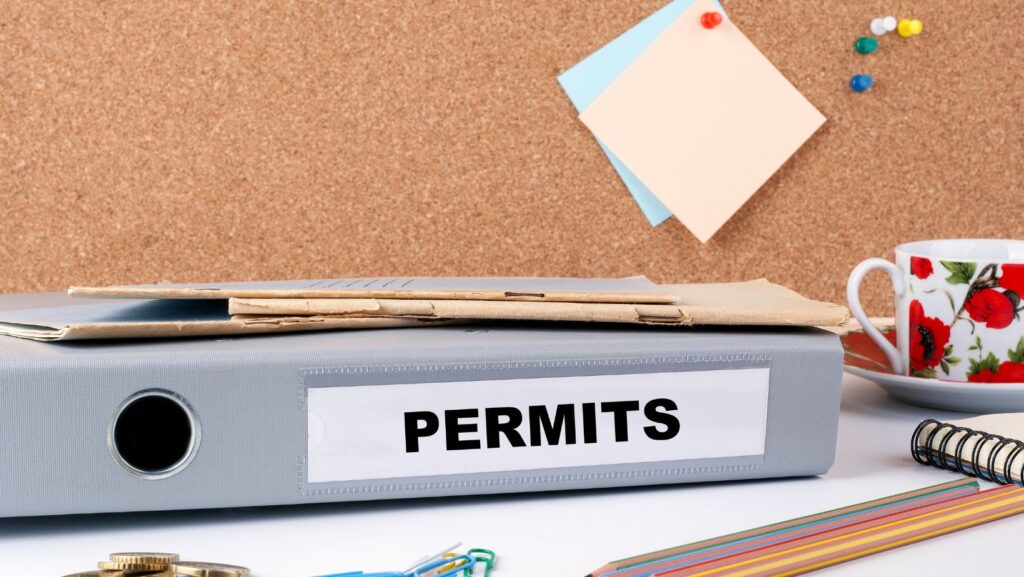Whether you’re building a new commercial space or remodeling an existing property, one thing stands between ideas and execution: permits.
Securing construction permits is meant to ensure safety and compliance—but for many projects, the process itself can feel like a project of its own. Delays, unclear requirements, and back-and-forth communication with local offices often slow everything down before the first brick is even laid.
Fortunately, technology is changing that. Across the construction and property sectors, digital tools are streamlining how permits are applied for, reviewed, and approved. What once required stacks of paper and multiple visits to a city office can now happen on a single screen.
To see how modern platforms are transforming this once-tedious process, click here to explore how professionals are using permitting software to bring greater speed and transparency to construction.
The Hidden Cost of Permit Delays
Behind every stalled project is usually a simple paperwork issue. A missing document, a form filled incorrectly, or miscommunication between departments can push a timeline back by weeks or months.
For developers and contractors, this doesn’t just mean frustration—it means money. Delayed permits can create a ripple effect through every stage of construction, including scheduling conflicts, labor downtime, and extended financing periods.
Even small residential builds aren’t immune. A single approval setback can affect everything from subcontractor availability to material pricing. When multiple projects are happening across different jurisdictions, the risk multiplies. Each office may have its own submission standards, inspection timelines, and communication methods.
That’s where new permitting technology steps in—helping teams stay ahead of those bottlenecks before they derail a project.
Digitizing a Slow, Paper-Heavy System
Historically, permitting relied on manual submission and in-person coordination. Architects or contractors would deliver paper plans to city departments, then wait for feedback by mail or phone. Tracking a permit’s progress was often guesswork.
Modern cloud-based solutions are changing that entire workflow.

Digital permitting platforms allow users to:
- Submit applications and supporting documents online
- Track real-time approval status across agencies
- Receive automatic updates when new actions are required
- Maintain secure, centralized records for all projects
By bringing these steps into one interface, teams eliminate redundancy and reduce the chance of human error. Digital systems also make it easier for government reviewers to communicate directly with applicants, shortening the time between submission and approval.
The result is a process that’s faster, more transparent, and easier to audit—something both regulators and builders appreciate.
Smart Tools for Smarter Projects
Beyond convenience, permitting technology is becoming more intelligent. Some platforms use workflow automation to flag missing data or identify compliance risks before an application is submitted. Others integrate directly with project-management software, allowing teams to coordinate construction schedules based on expected approval dates.
This kind of automation doesn’t just reduce paperwork—it changes how professionals plan their projects. With clear visibility into permit timelines, managers can schedule resources more effectively, coordinate inspections, and avoid the stop-start cycle that slows traditional construction.
In large-scale developments or multi-site retail build-outs, these efficiencies translate into measurable gains. Faster permits mean quicker ground-breaks, reduced holding costs, and fewer administrative headaches. For local governments, digital permitting systems can also reduce backlogs and improve service delivery to constituents.
Building Confidence Through Transparency
Perhaps the greatest benefit of technology in permitting is trust. When every action, submission, and approval is logged digitally, both builders and regulators can verify progress instantly. There’s no ambiguity about whether a document was received or a fee was paid—it’s all recorded within the system.
This level of visibility encourages accountability on both sides. Builders gain confidence that their submissions are being processed efficiently, while agencies can demonstrate clear compliance oversight. In industries where timing and documentation can make or break a project, that transparency is invaluable.
The Future of Permitting Is Collaborative
The evolution of digital permitting is still unfolding. As cloud adoption grows, we’re likely to see even tighter integration between municipalities, contractors, and design professionals. Features like automated code checking, AI-based document validation, and real-time data dashboards will soon make today’s systems look as outdated as faxed applications.
What won’t change, however, is the need for cooperation between all parties involved in a build. Technology doesn’t replace communication—it enhances it. By centralizing data and simplifying repetitive tasks, digital tools free up professionals to focus on quality, safety, and innovation.
Conclusion
Permit challenges have long been part of construction, but they don’t have to define it. As the industry embraces smarter, cloud-based solutions, both professionals and property owners stand to benefit from faster approvals, clearer communication, and stronger compliance.
Whether you’re planning a major commercial development or a large-scale renovation, the message is clear: technology is paving the way for smoother, more predictable building processes. And as more cities and project teams adopt digital permitting, “waiting for paperwork” may soon be a phrase of the past.


More Stories
Home Rocket Realty: Your Ultimate Guide to Real Estate Success
Smart Strategies for Smooth and Secure Real Estate Transactions
How To Make Home Life More Comfortable & Relaxing For Yourself In Australia.